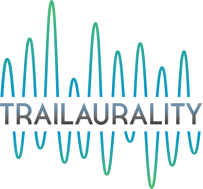Wonder Woman 1984
/Undoubtedly the breakout hit of the DC Extended Universe that Warner Bros. Pictures is pushing to capitalize on the past decade of Marvel’s dominance in theatres, Wonder Woman receives its due sequel in June 2020. Its first trailer drops just in time for the holiday season, and as per the title no time is wasted to foreground the new film’s central conceit as evidenced in the title—worlds away from World War II, instead we have Gal Gadot in the time of neon and synthesizers.
Big and brash is the aim here, and after a 24 second opening with a bit of dialogue and thrumming bass to set the scene, by 0:26 we hear the full melodic motif for New Order’s 1983 release “Blue Monday” in what sounds like a very custom arrangement as a giant “1984” title card appears on screen synched to the beat.
Already, we hear swells of strings mixed in with the pounding beat, perhaps representing the presence of Wonder Woman in her full, classically-inspired costume, contrasting against—and yet, in terms of colour and bombast, also blending in with—the 1980s mall setting she finds herself in. Notably, in 2020 we are chronologically equidistant to the 1980s as much as the first Wonder Woman to its sequel—roughly forty years. This situates the 1980s as a sort of middle ground or meeting place between the audience and Wonder Woman.
At 0:48 it pauses for a moment, leaving in wisps and traces of ethereal piano as Chris Pine’s character—the love interest of the original film, thought to have died—inexplicably (thus far) comes back. At 1:07 the track effectively resumes, and this time carries heroic brass undertones in the synth mix.
At 1:20, about the midpoint of the trailer, there’s an unabashed synchronicity between the triplets in the beat and the gunshots that reads more as a choreographed dance than a gun fight. It serve as a hyper-stylized sort of violence that befits the entire trailer’s sense of embracing stylistic overkill and reams of colour.
As the title cards announce “a new era of wonder begins,” all of the instruments finally coalesce into a thorough blend of orchestra and techno, with disco-like hits by the strings. This is again shifted by the sudden introduction of isolated epic percussion. This shift works is tandem with the on-screen move to more footage showcasing her people the warriors of Themyscira; the brass and strings come back foregrounded.
This all falls away by 2:10, however, at the VHS-like main title card reminds us in an unsubtle manner that we are, again, firmly in the throes of a North American, 1980s pop aesthetic, and the music reverts accordingly to a purely synthesizer-driven affair.
This contrast and sense of struggle between contrasting aesthetics provide a greater sense of epic urgency when that instrumentation is foregrounded; it’s this contrast that, in addition to its inherent novelty, also serves as a device to reinvigorate the tropes of epic trailer music that audiences are becoming increasingly used to. The soundtrack to this trailer gives new meaning to the practice of covering an older song for the sake of nostalgia.
— Curtis Perry








